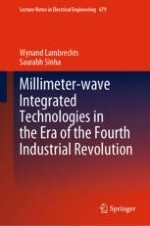2021 | OriginalPaper | Chapter
4. Transceivers for the Fourth Industrial Revolution. Millimeter-Wave Low-Noise Amplifiers and Power Amplifiers
Authors : Wynand Lambrechts, Saurabh Sinha
Published in: Millimeter-wave Integrated Technologies in the Era of the Fourth Industrial Revolution
Publisher: Springer International Publishing
Activate our intelligent search to find suitable subject content or patents.
Select sections of text to find matching patents with Artificial Intelligence. powered by
Select sections of text to find additional relevant content using AI-assisted search. powered by
